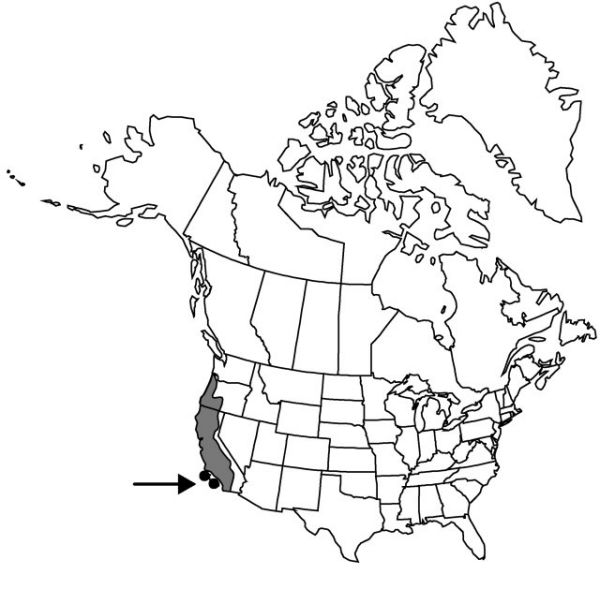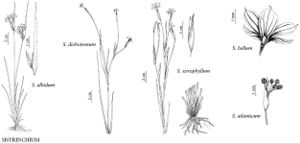Difference between revisions of "Sisyrinchium bellum"
Proc. Amer. Acad. Arts 12: 277. 1877.
imported>Volume Importer |
imported>Volume Importer |
||
| Line 70: | Line 70: | ||
|publication year=1877 | |publication year=1877 | ||
|special status=Illustrated | |special status=Illustrated | ||
| − | |source xml=https:// | + | |source xml=https://bitbucket.org/aafc-mbb/fna-data-curation/src/2e0870ddd59836b60bcf96646a41e87ea5a5943a/coarse_grained_fna_xml/V26/V26_736.xml |
|genus=Sisyrinchium | |genus=Sisyrinchium | ||
|species=Sisyrinchium bellum | |species=Sisyrinchium bellum | ||
Latest revision as of 21:16, 5 November 2020
Herbs, perennial, cespitose, green to ashy olive when dry, to 3.8 dm, not glaucous. Stems branched, with 1–2 nodes, 1.5–5.3 mm wide, glabrous, margins entire to denticulate apically, similar in color and texture to stem body; first internode 11–33 cm, usually equaling or longer than leaves; distalmost node with 2–3 branches. Leaf blades glabrous, bases not persistent in fibrous tufts. Inflorescences borne singly; spathes green, obviously wider than supporting branch, glabrous, keels entire to denticulate; outer 14–30 mm, usually 2–7 mm longer than inner, tapering evenly towards apex, margins basally connate 4–7.6 mm; inner with keel evenly curved to straight, hyaline margins 0.1–0.7 mm wide, apex abruptly widening, ending 0.2–1.3 mm proximal to green apex. Flowers: tepals light blue to dark bluish violet or rarely purplish or white, bases yellow; outer tepals often broadly cuneate, 10–17 mm, apex rounded, truncate, or occasionally emarginate, aristate; filaments connate ± entirely, usually glabrous; ovary similar in color to foliage. Capsules tan to dark brown, globose to obovoid, 3–5 mm; pedicel erect to ascending. Seeds globose to obconic, lacking obvious depression, 1.5–2.2 mm, rugulose. 2n = 32.
Phenology: Flowering early spring–late summer.
Habitat: Open, mostly moist, grassy areas and woods
Elevation: 0–2400 m
Distribution

Calif., Oreg., Mexico (Baja California).
Discussion
Sisyrinchium bellum is the most common species of Sisyrinchium in California; it is highly variable in habit, flower color, and size. Plants of serpentine areas are intermediate with S. idahoense var. idahoense; plants of the Transverse Ranges are intermediate with S. demissum.
Selected References
None.
